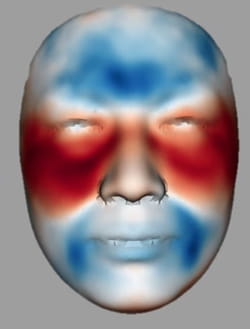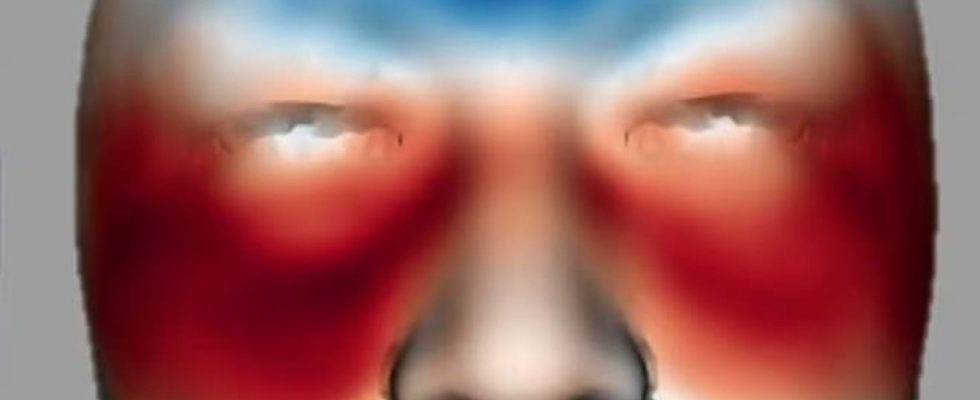A research team has developed a tool to calculate his biological age, versus his chronological age, in a Chinese university. This gives valuable information about our body.
After reading this article, you will never see yourself in the mirror the same way again! Using a 3D camera system coupled with artificial intelligence, Jing-Dong Han, a researcher at Peking University, has developed a tool capable of determining a person’s physiological age. A physiological age (or biological age) which may differ from the chronological age by up to 7.5 years.
Certainly, scientists have known for decades that chronological age, the one that appears on our driver’s license, for example, does not tell the whole story. Our biological age reflects the state of our cells and organs, as it is influenced by multiple factors, from our environment to our diet or our physical activity. It is, however, not easy to determine: multi-systemic, it is not based on a single parameter but rather on many criteria (length of telomeres, ends of chromosomes, strength of the immune system, etc.). This is where Professor Han’s high-precision 3D images come in, scrutinizing the faces: beyond the unsightly signs of age, jowls and bags under the eyes turn into indicators of health.
How it works ?
Jing-Dong Han and his colleagues have developed an AI (artificial intelligence) based tool, called the “facial aging clock”. It involves taking a 3D image of a person’s face and calculating their biological age. Unlike other clocks, which require blood or tissue samples and expensive analysis to implement, the face clock is relatively inexpensive and non-invasive. All the patient has to do is sit for just one minute in front of a 3D imaging camera.

Professor Han’s research indicates that accelerated facial aging is an indicator of systemic inflammation and is associated with various health conditions, such as high cholesterol, hypertension and other age-related diseases. And in the mirror, what does it look like? This accelerated aging is manifested by a narrowing of the forehead when the skin sags, explains the researcher, quoted by National Geographic. On the other hand, high levels of LDL and total cholesterol in the blood result in jowls and bags under the eyes.
How was the tool created?
Inspired by a centuries-old Chinese practice, whereby practitioners guess a person’s health by “reading” their face, Professor Han, a computational biologist at Peking University, and his team built their “face clock by analyzing 3D images of the faces of approximately 5,000 residents of Jidong, China. Researchers created two AI-derived clocks, one predicting chronological age and the other biological age, based on how our faces change over time: sagging eye corners , the widening nose, the distance between the nose and the mouth which increases…
To explore the links between appearance, age and underlying factors that influence health, Jing-Dong Han took blood samples and studied the habits of his research subjects. For example, smoking, snoring, and high blood total cholesterol levels were often characteristics of people who age rapidly, while yogurt consumption, regular meals, and higher bone mineral density were common traits of people who age rapidly. people who age slowly. According to the researcher, this variability intensifies in the forties and early fifties. And means that adopting healthier habits could make a significant difference in terms of biological age.
What concrete advances should enable facial aging clocks?

“Just being able to measure aging is already a big step forward, and Dr. Han’s technology, already used at the clinic where she works in Hainan to assess the health of patients, will play an important role in studies of aging,” Ruibao Ren, a medical researcher at the International Center for Aging and Cancer at Hainan Medical University, China, told reporters recently.
Jing-Dong Han’s work could revolutionize preventive medicine, on the condition of refining the measures of epigenetic clocks individuals, not quite there yet, points out Andre Esteva, founder and CEO of a medical AI start-up in Los Altos, Calif. Physicians could thus incorporate biological age into their patient’s annual check-up, in addition to cholesterol tests or blood pressure measurements. “This could be a possible alarm signal when faced with the question: how do you manage your health?” Raises Ruibao Ren in the Anglo-Saxon press.
Furthermore, other applications are envisaged. Pharmaceutical companies can use this tool to evaluate drugs that promote longevity or slow aging, for example. And as an oncologist, Dr. Ren hopes that with the facial clock, he can diagnose cancer patients when the disease is in its early stages. Since cancer is strongly correlated with age, if someone is showing signs of accelerated aging, doctors can be more proactive with screening. “Ageing is the cause of probably 80% of diseases,” notes Ruibao Ren. The tool could also make it possible to identify new therapeutic pathways to treat some of them, like cancer.
Where is Han’s team?
Professor Han’s team is currently exploring other clocks, such as a “transcriptome” clock, which reflects DNA damage in the blood, or a “single cell clock”, based on information from a cell. The goal: to aggregate disparate measurements—each clock shows a different aspect of aging—into a composite clock. The group of scientists also continues to refine its facial aging clock. A version applicable to all ethnic groups should be put on the market soon. And Han’s ultimate goal? “Well, I tell my colleagues that I will try to make them live at least five years longer and look at least five years younger,” she laughs with our colleagues.
